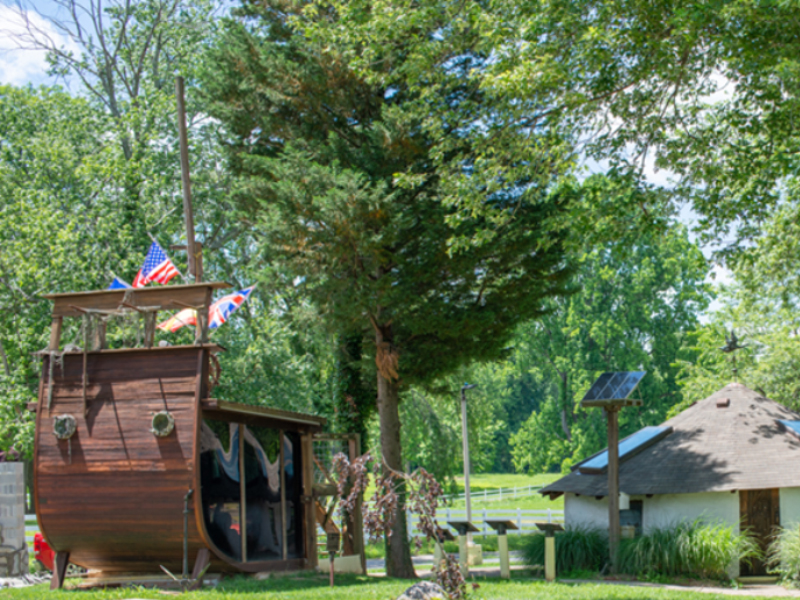Every February brings us a month of memorable activities, from the Super Bowl to Valentine’s Day. In addition, we get to celebrate African American History Month, also known as Black History Month, which gives us ample opportunities to learn rich historical facts, watch performances, view art and read intriguing stories about African American women, men and children. In addition to the National Museum of African American History and Culture, part of The Smithsonian Institution, three museums in our area are ready to help us explore, understand and appreciate African American history.
Washington, D.C.
The African American Civil War Museum has a mission “to correct a great wrong in history that largely ignored the enormous contributions of the 209,145 members of the United States Colored Troops [UCST],” according to its website. Located in the Greater U Street Historic District among notable landmarks, the museum currently operates at a stand-alone gymnasium that is part of the historic Grimke School, with plans to expand with a move inside the main school building as soon as possible.
Across the street from the museum is the African American Civil War Memorial, known as “The Spirit of Freedom.” It is an impressive 10-foot-tall bronze statue depicting four members of the UCST standing in a guard pose, armed with rifles. The lower walls surrounding the sculpture feature the names of all 209,145 members of the UCST.
An active participant of the Descendants Oral History Project to commemorate, capture and catalogue the history of Civil War ancestors, the museum prides itself on researching long-lost relatives of museum patrons who served in the Civil War. “A family walks in searching for their soldier and a sharing of information occurs between the families and the museum. Much of what we know about these soldiers outside of public record comes from their families,” notes their website.
Admission to the museum is free, but by appointment only due to the pandemic. It is located at 1925 Vermont Avenue, N.W., with the memorial located at the plaza across the street at 11th and U Streets. More information: afroamcivilwar.org/about-us/visit.html or call 202-667-2667.
Northern Virginia
According to the City of Alexandria, “The mission of the Black History Museum is to enrich the lives of Alexandria’s residents and visitors, to foster tolerance and understanding among all cultures and to stimulate appreciation of the diversity of the African American experience.” The Alexandria Black History Museum has been closed since December 22, 2020, but readers are encouraged to visit the city’s website for virtual history lessons because “Luckily, history doesn’t stop just because our doors are closed,” says its website.
The museum includes two main rooms: the Robert Robinson Library, which is a permanent exhibition gallery featuring art and artifacts of significance in African American events in Alexandria City and the Parker-Gray Room, a gallery of changing exhibitions. Readers can visit the city’s website to take a Google 360° virtual tour of the museum.
The virtual tour will guide readers through various display boards hung throughout the museum. Be sure to zoom in on “A Landmark of Segregation,” “A Legacy of Service,” “What Remains,” “A Day in the Life of a Slave Child” and more. Each display board features unique snippets of history and photographs that help shape the story of some of the experiences African Americans endured.
The Alexandria African American Heritage Park, which is part of the Alexandria Black History Museum, is located a little over a mile and a half away from the museum. The park is situated on a one-acre, 19th-century African American cemetery and features a trio of bronze sculptured trees, “Truths that Rise from the Roots Remembered,” intended to honor the historical contributions of African American men and women who helped shape the growth of Alexandria.
Visitors can see the full spectrum of Black history programming offered by the City of Alexandria at: alexandriava.gov/historic/blackhistory. The park is located at 500 Holland Lane.
Montgomery County, Maryland
The Sandy Spring Slave Museum and African Art Gallery is located in Sandy Spring, Md. on a plot of land that was once a plantation where Black people were enslaved. According to its website, the focus of the museum is to showcase “the heritage of Blacks from their origin through the Middle passage, the salvation the Underground Railroad provided, the struggle for civil rights, and their accomplishments in the United States and African Diaspora.”
The museum has been closed since mid-November 2020, but visitors are encouraged to go to their website to view their updated programming of educational virtual events. Currently in progress is a large-scale project to create digital archives of documents and photos to help preserve history.
In addition, visitors are encouraged to conduct self-guided individual tours of the museum campus to see many interesting things. Keeping in mind social distancing and mask guidelines, visitors can enter four separate structures, including the exterior of the main museum building, known as the Great Hall, a cross-section of a full-sized replica of a slave Clipper ship, a log cabin from the slavery era relocated from Olney, Md. and a hut replica of the boyhood home of Nelson Mandela.
Also worth visiting is a replica of “The Door of No Return,” a large archway through which visitors pass to see wax figures of notable warriors, politicians and activists of African descent, including Haile Selassie, Kwame Nkrumah, Nelson Mandela and Shaka Zulu. The museum campus also features large information panels that describe African Americans from the local Montgomery County area. The museum is located at 18524 Brooke Road in Sandy Spring. More information: sandyspringslavemuseum.org or call 301-774-4066.

